What is Ice and Water Shield? (For Roofing)
Roofs are often a lot more complex than they seem when you look at them from the ground. At first glance, you may think all a roof is made of is a...
6 min read
 Chris Talton
May 10, 2023
Chris Talton
May 10, 2023
From the ground, all you really see up on the roof are shingles that cover it, maybe some pipes or vents, and perhaps the gutters. However, as with most things in life, there’s more going on than it seems. A complete roofing system has several different materials, each with their own purpose in keeping your roof safe from leaks and other damage.
If you’re getting going in your own roof replacement, you may be surprised by the cost associated with it, especially if you were just expecting to have some shingles thrown up there. To prevent that sticker shock, and help you learn more about what’s currently on your roof, we’re going to go over the full list of materials that you’ll need installed for a complete roofing system!
In this blog, we’re going to be covering:
Alright, let’s jump in!
To help better break up this massive topic, we’re dividing the main types of materials into three sections: Your shingles, the materials that back them up, and the items that provide additional protection to your roof.
Well, I say that we’re breaking it up into three sections, but then I realized that one of the most important parts of your roof doesn’t exactly fit into either of them, so it gets a section all by itself.
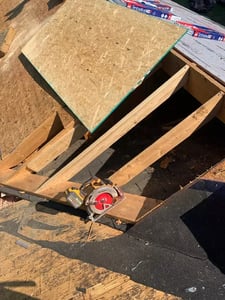 Your roof decking is the base layer of your roof. It’s compiled of multiple boards that are either plywood, or oriented strand boards (OSB), and serve as the connection between your roofing materials and the frame of the house. The decking (sometimes also called sheathing) is nailed or stapled into the building’s rafters, and roofing materials are installed on top of it.
Your roof decking is the base layer of your roof. It’s compiled of multiple boards that are either plywood, or oriented strand boards (OSB), and serve as the connection between your roofing materials and the frame of the house. The decking (sometimes also called sheathing) is nailed or stapled into the building’s rafters, and roofing materials are installed on top of it.
The decking is also where the largest effect of roof leaks are felt. Small punctures and general wear can lead to water slipping through your shingles and other defenses, and water logging the wood, creating rot. If there are places of the decking that have received water damage, you may not know it until you’ve pulled off the roof during the replacement.
In these cases, the damaged areas will have to be replaced, as you need a solid base to install new materials.
It's rare that the entirety of your roof decking will need to be replaced, unless the decking is old, and not thick enough for your local building codes, or the roof has been seriously neglected, and has been taking on water for a long time.
Moving on, the surface layer of your roof is comprised of a few types of asphalt shingles: the shingles themselves, starter shingles, and ridge cap.
Like we talked about earlier, the main thing you’ll be able to see on the roofs around your neighborhood are the asphalt shingles. They give the roof its texture, color, and provide the most protection of all the roofing materials.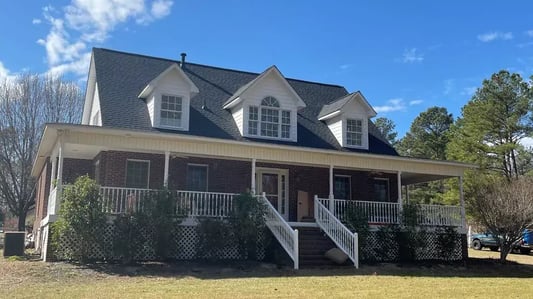
The shingles are constructed by covering a fiberglass mat with asphalt, a layer of protective granules, and an adhesive that allows it to seal with the other shingles above and below it.
Asphalt shingles have become the most popular roofing materials for homes in North America in large part due to their relative low cost for the durability that they offer. There’s also a wide range of flexibility in design, color, level of protection, and price range.
The three main categories of shingles are 3-Tab, Architectural, and Luxury. There’s a whole lot to go into on this topic, and luckily for you, we’ve done just that in our blog on the different types of asphalt shingles!
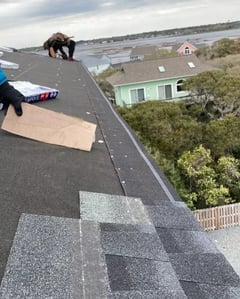 Before you start putting on the main layer of protective shingles, we have to put on starter shingles or strips on the edges of the roof. These asphalt strips are nailed in, and have an adhesive at the bottom that melts, better securing the laying of shingles above it.
Before you start putting on the main layer of protective shingles, we have to put on starter shingles or strips on the edges of the roof. These asphalt strips are nailed in, and have an adhesive at the bottom that melts, better securing the laying of shingles above it.
The purpose of these shingles is to allow the first run of full shingles to have something to stick to the way that all the others do. If there were no starter strips, the bottom of your shingles would only be relying on their weight to keep them down, which isn’t much of a defense against strong winds.
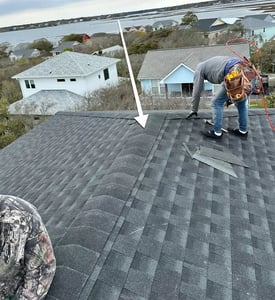
Ridge cap shingles do pretty much exactly what they sound like, they cap off the ridge of your roof in an aesthetically pleasing way, and provide cover for the area where everything meets at the top.
These shingles are typically pre-bent, and thicker than normal shingles to assist with their wind resistance, and ability to direct water that hits the peak of your roof.
In this section we’ll be going over some of the additional layers of protection that run underneath your shingles, backing them up in case they get damaged, and covering any gaps in the roof that your shingles aren’t flexible enough to get to.
The materials that we’ll be going over are underlayment, ice/water shield, and flashing.
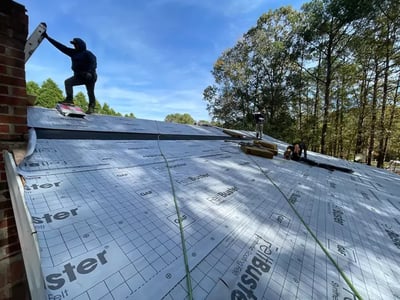 Underlayment is a water-resistant layer, usually rolled out and nailed down directly onto the roof decking before other roofing materials. The underlayment is really the last line of defense that your decking has, and serves to protect it from water getting through any minor scrapes and holes in your top layer of shingles, especially as a result of wind-driven rain.
Underlayment is a water-resistant layer, usually rolled out and nailed down directly onto the roof decking before other roofing materials. The underlayment is really the last line of defense that your decking has, and serves to protect it from water getting through any minor scrapes and holes in your top layer of shingles, especially as a result of wind-driven rain.
Usually this material is made of either an asphalt saturated felt paper, or more commonly these days, synthetic underlayment, which is a mix of fiberglass and asphalt.
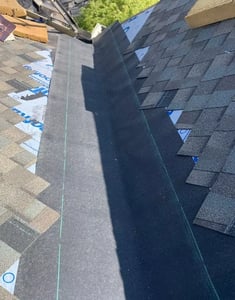
Ice/water shield is essentially a beefed-up underlayment, with rubberized asphalt and an adhesive that allows it to be rolled out secured without puncturing the surface with nails or staples.
This material is most frequently used in areas that are very sensitive to leaks, and where water spends a lot of time. These areas include the edges of your roof, around penetrations in the roof like chimneys and skylights, and in your roof’s valleys.
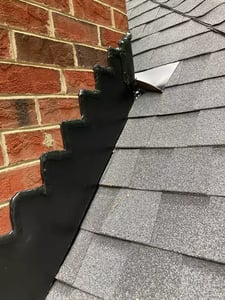
Also used in these areas, especially around penetrations, is flashing. Flashing is a thin, flexible metal that is used in several different ways, in multiple different areas of the roof, usually to cover gaps between roofing surfaces.
The most common areas where you’ll find flashing are at walls or chimneys, around vents and skylights, and sometimes in open valleys, where there isn’t any shingle cover, and flashing is placed instead.
You’ll likely replace your flashing along with the other parts of your roof, but that will be worked out for your specific circumstances with your roofer.
Throughout your roof, you’ll find a few other points that need to be provided extra protection, or some additional systems that work with your roof to keep things safe and sound.
Here we’ll be talking about pipe boots, drip edge, as well as your ventilation and gutter systems!
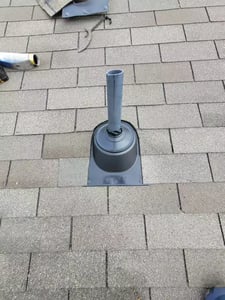
Pipe boots are pieces of rubber or metal that cover the base of the various ventilation pipes that stick out of your roof. The pipes serve to let gas or moisture out of your home, usually in areas like your bathroom, or kitchen.
Because they stick out through the roof decking, they need to have something that protects the gap and hole created for them. That’s where the boots come in. They’re usually cut to fit around the pipes, and create an airtight seal to prevent water from flowing down the pipe.
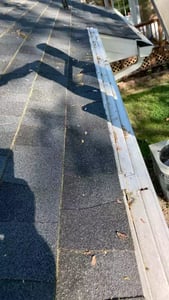
Drip edge is a specially designed type of flashing that is installed beneath the first layer of shingles to prevent water from flowing backwards underneath the roofing materials, and into your fascia.
Drip edge is crucial for keeping your roof in good health, and for getting water off your roof and into your gutters in a safe manner. Without it, the bottom edges of your roof will be exposed to loads of water, drastically shortening its life, and increasing the work you’ll need to have done during a roof replacement.
There are several types of roof vents, whether it be roof louvers ridge vents, or wind turbines. Each are designed to let warm air out of your roof, and keep the temperature and humidity below it regulated. Without proper ventilation, your attic is going to be much hotter and more humid, creating condensation in your roof decking, and drying out the asphalt in the shingles above it.
That’s really just a simple overview of attic ventilation, but we’ve gone much more into it in our blog on that subject!
You may not think of gutters being a part of your roof, but they most definitely work in tandem with your roof to distribute water safely and effectively to the ground. If your gutters are clogged and unable to function properly, that water may back up onto your roof, causing increased wear in those areas, and allowing it to seep into your shingles, and roof decking.
Because of this, its super important to keep your gutters clear of debris so the water can flow through with ease. Once again, we’ve got another awesome blog about the reasons to clean your gutters, so check that out to learn more!
You may be thinking to yourself, “That’s a lot of stuff! How long does it take to put it all on?” Typically, the roof replacements that we do can get done in one day, but there’s plenty of factors that go into that. If you want to learn more about the length of the whole roof replacement process, check out this blog!
On Tops Roofing has been replacing and repairing roofs in the Raleigh, North Carolina area since 1991! Whatever your roofing project requires, We’re on it!
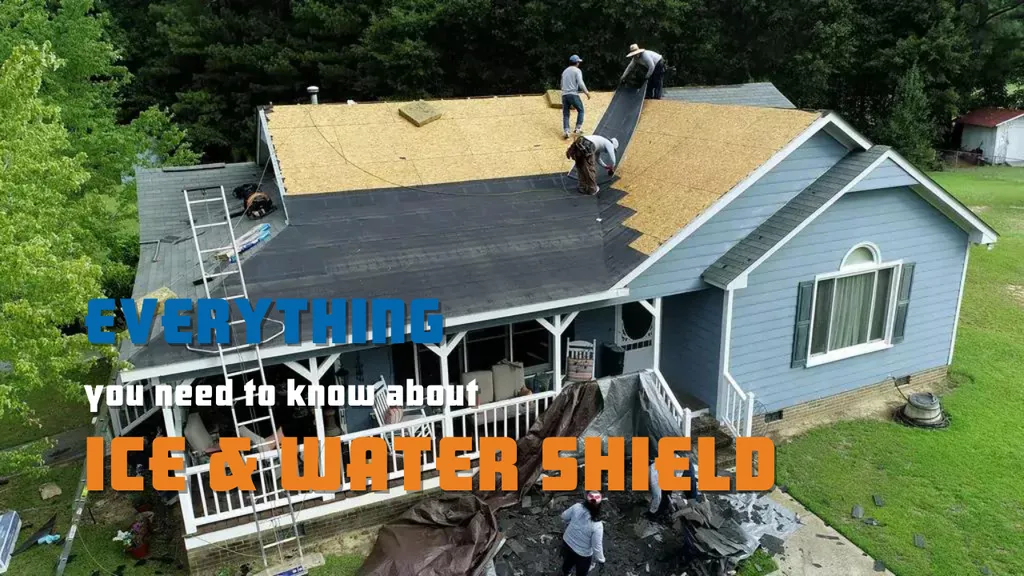
Roofs are often a lot more complex than they seem when you look at them from the ground. At first glance, you may think all a roof is made of is a...
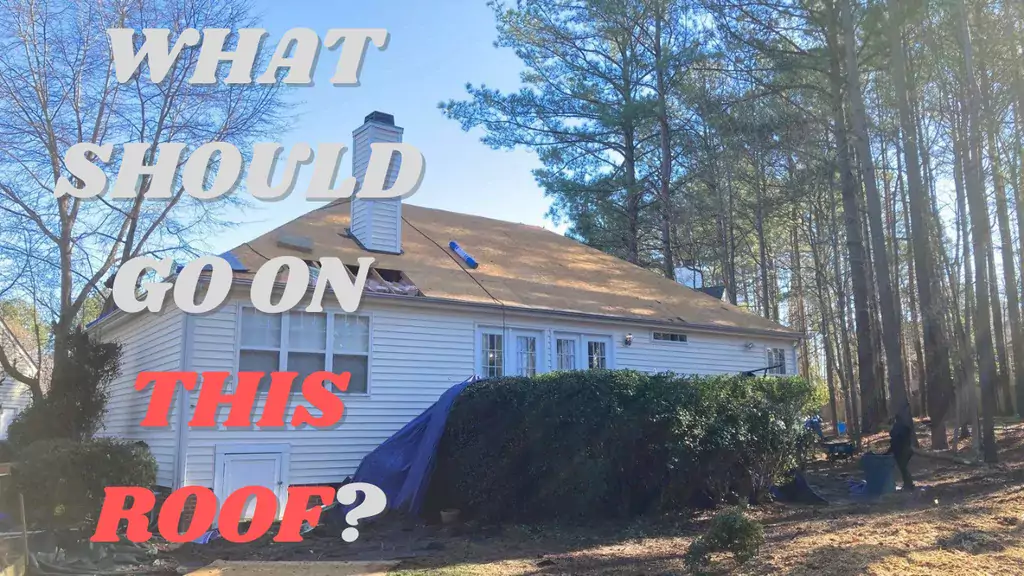
If you’ve already gotten underway in thinking about what you need to do for your roofing project, (and you’ve decided on getting a roof replacement)...

Starting a roof replacement project is a pretty big undertaking. It requires stripping your home of something designed to protect it, and trusting...